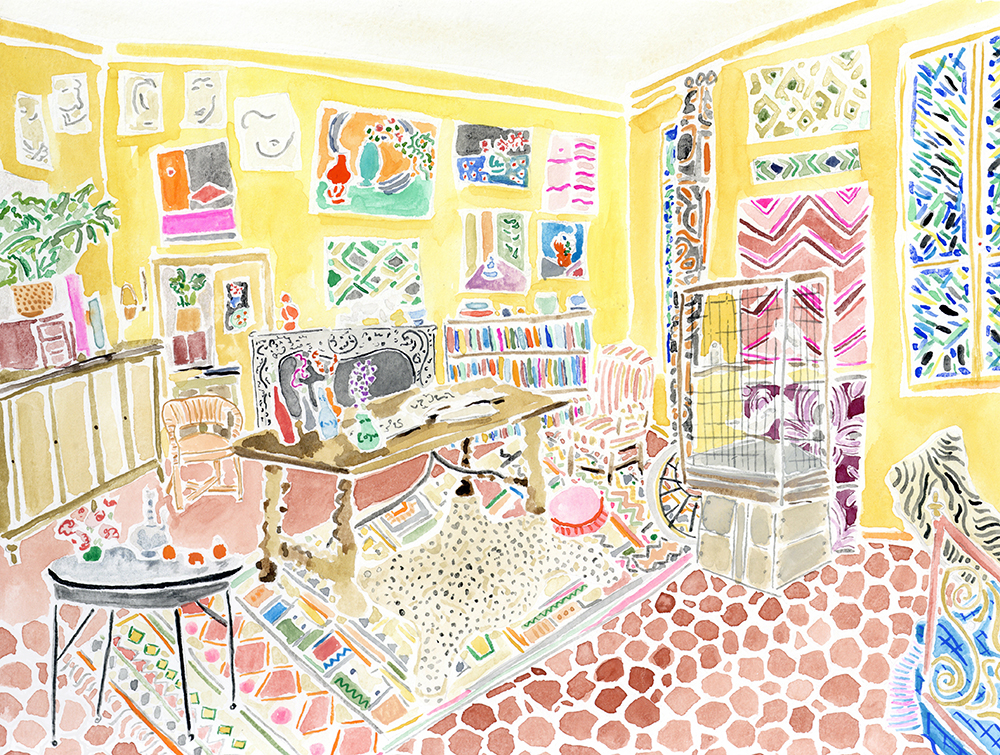Sometimes, serendipity spurs events that clearly were meant to happen.
For example: A 2017 encounter between two artists in residence at Ragdale Foundation in Lake Forest, Il. has led to a book that explores the relationship between artists and their environments.
Writer Melissa Wyse and illustrator Kate Lewis had been independently studying the homes of famous artists for years. Wyse would visit them and take copious notes, while Lewis worked visually to bring them to life.
She had been painting interiors for a decade while working at the Art Institute in Chicago, surrounded by the work of Claude Monet in the museum galleries. Then she traveled to Giverny to see his home. “I painted the rooms there and noted how bright and patterned they were,” she says. “I saw how he lived in his home, and I wondered if there was a connection between his art and his interior life.”
Then they met at Ragdale and discovered they had that common interest. “We both were drawn toward interiors, and especially artists’ homes,” Lewis says. “And we had in-depth, interesting conversations about how my painting and her writing could work together in a book.”
Eventually the pair – Wyse in Brooklyn and Lewis in Franklin, Tenn. – would collaborate on their book via email, Google Docs, and a great many phone calls. “I thought it all really belonged together, my writing and her paintings – it was a very organic collaboration,” Wyse says.
Et voila! Early this year, Chronicle Books launched “Artists in Residence: Seventeen Artists and Their Living Spaces, from Giverny to Casa Azul. It’s a visual and verbal treat – one that covers the homes, studios and environments of artists ranging from Matisse and Monet to Judd and Van Gogh to O’Keefe, Krasner, Pollock and Basquiat. “This is an entry into their entire universe,” Lewis says.
The book was originally intended to cover 15 artists, but in the end two more were added. “The table of contents was the most labored over section in the book,” Wyse says. “We looked at time periods, gender, race, economic background and artists who had different kinds of relationships with their homes.”
Each home is different, but each is linked to the creative process. They’re really divergent – some are places of rest and escape and others are an extension of their process, where they experimented with shape and color,” she says. “Regardless, the homes were in one way or another in conversation with their work – an extension of the work they did.”
What Wyse and Lewis have created is a book for those who are passionate about art and its history. “It’s a way of thinking about art in a way that’s not taught in art history,” Wyse says. “And it’s for those who are curious about how artists lived with day-to-day experiences in their homes.”
And because many of the homes are still standing, it’s now possible to visit them vicariously in the book, then tour the real deal.
For more, go here.
[slideshow id=2280]

